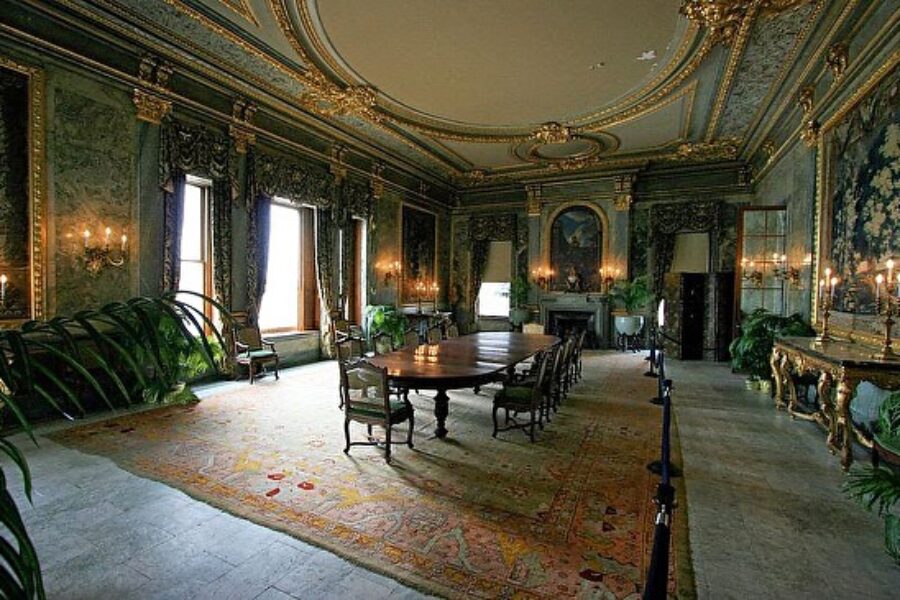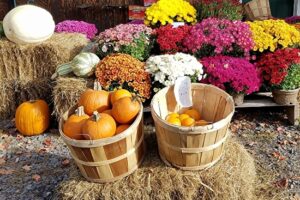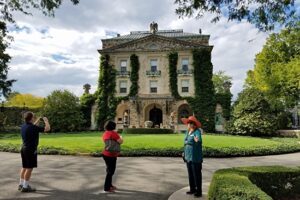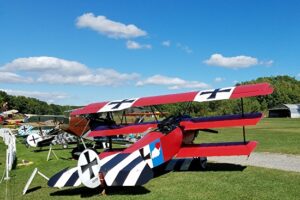It’s here—the last day in the Hudson River Valley before we start back home. I can’t believe it. There are four suitcases to pack, books that I purchased during the trip I need to make sure come home with us, tons of specialty groceries that I want to wind up in my kitchen in Wimberley, and lots of little kitchen gadgets and dishes that spoke to me during the last six weeks that need to find a safe place in the trunk of the car. And we really do need clean clothes for the impending trip halfway across the US.
I blissfully ignore my TO DO list and choose one last adventure on the other side of the river—only twenty-eight miles away. However, due to the twisting, curling, narrow lane roads (worse than the Hill Country), it is a forty-five-minute drive. Today, Michael has the $1.50 for the bridge in hand, rather than handing me the bag full of change and requesting that I dig out six quarters.
Staatsburgh Historic Site
Once at the Staatsburgh Historic Site, we park too soon, missing the Mill Mansion parking lot, and find ourselves down the hill from the massive Gilded Age structure. What we have before us, as we crest the high knoll, is one more Livingston estate one more time–a Beaux-Arts mansion of 65 rooms and 14 bathrooms expanded from a 25-room Greek Revival structure when the Livingston daughter who inherited the home, Ruth, married the wealthy financier Ogden Mills. They were friends of the Vanderbilt’s down the road.

We slide into the visitor’s center just as the next tour begins. I quickly pay the $6 per person fee and we join the group. There are four of us and one chatty, informative guide.
The Mill Mansion

The middle of the home, part of the original structure, is all warm wood and portraits of Livingston ancestors—they are familiar faces. I know their stories but hear them again. The newer sections are yesterday’s opulence, some with draperies in a state of decay, torn and hanging in tattered disarray. In contrast, others are painstakingly reconstructed to mimic the original in color, style, and fabric. The cost to maintain the sumptuousness of the bygone era is prohibitive—$4,000,000 to fix the façade with barely a dent made. No wonder so many of these historic homes were donated to the state, the government, or The National Historic Trust.
We are reminded that this was really just a two-month home—Manhattan in the winter, Paris in the spring, Newport in the summer, and here—Staatsburg—in the fall, where days were full of (up to eighty) guests, sailing, tennis, walking, riding, breakfasts, lunches, cocktails and dinners. A guide in one of these homes called it all (the Gilded Age) wicked excess. That might sum it up. I wonder if they were happy.



I do love the guides that lead us through the sumptuous homes in this sumptuous valley—well, most of them. Unpaid, I am sure, they are passionate about what they do, knowledgeable, voluble, and because Michael and I have been curious about what we have seen after each tour, they might not necessarily be totally accurate in all of their statements. Ultimately we see less than twenty of the sixty-five rooms when we are dismissed from the small group to wander the grounds on our own.
The Grounds
The back of the estate has a neatly manicured lawn that slopes down forever toward the river, which we can finally see in all of its glory—a lighthouse peaks through the trees at the water’s edge. Once again, the grounds are open to the public for free; there are trails for walking and grounds for picnicking—the trees tower and shade. I would willingly live in the area, if for nothing else than all of the parks and all of the trails and all of the towering trees. I wish I liked the cold.




Lunch in Rhinebeck
Lunch is in Rhinebeck—the tiny little town we have driven through numerous times, eaten in once, and spent one of the best days of the trip while watching old WWI era planes climb and dive, soaring across the brilliant blue Autumn skies, leaving smoky trails. Here, during peak eating and shopping hours, we finally find a place to leave our car—off the main street in a municipal parking area. Now I know how visitors to Wimberley must feel—frustrated.
I guess frustration is sometimes worth it because we are forced to walk along a charming side street before turning left and heading to the Calico Restaurant on Mill Street. As we begin to step up and open the door, we notice a sign in the window—We no longer serve lunch. Of course. It’s just indicative of our entire trip and my mid-day meal restaurant choices.
Liberty Public House
Michael sees a restaurant across the street and suggests we eat there—I see one next door to the one he suggests with outside tables. It is a beautiful day, and it is my week, so…



In the old days, when business meetings ruled my world, I had the reputation of ordering the strangest thing on any restaurant menu. Things aren’t very strange to me anymore, but this one has a combination of ingredients that I like which I have never really heard of before. Seated at a sidewalk table at the Liberty Public House, I order curried sprouts on toasted whole-grain bread, topped with avocado, melted Swiss cheese, and garnished with walnuts and raisins. Of course, I order French champagne to accompany it. I’m not sure if it’s the sun or the air or the place or the fact that I am here, but I am hungry, and I am happy. It is all delicious. Every once in a while, I steel one of Michael’s salty fries to munch while I sip the champagne.


We cross the Kingston-Rhinebeck bridge for the last time, heading back to Woodstock—heading back to full closets and empty suitcases.









Leave a Reply
Your email is safe with us.